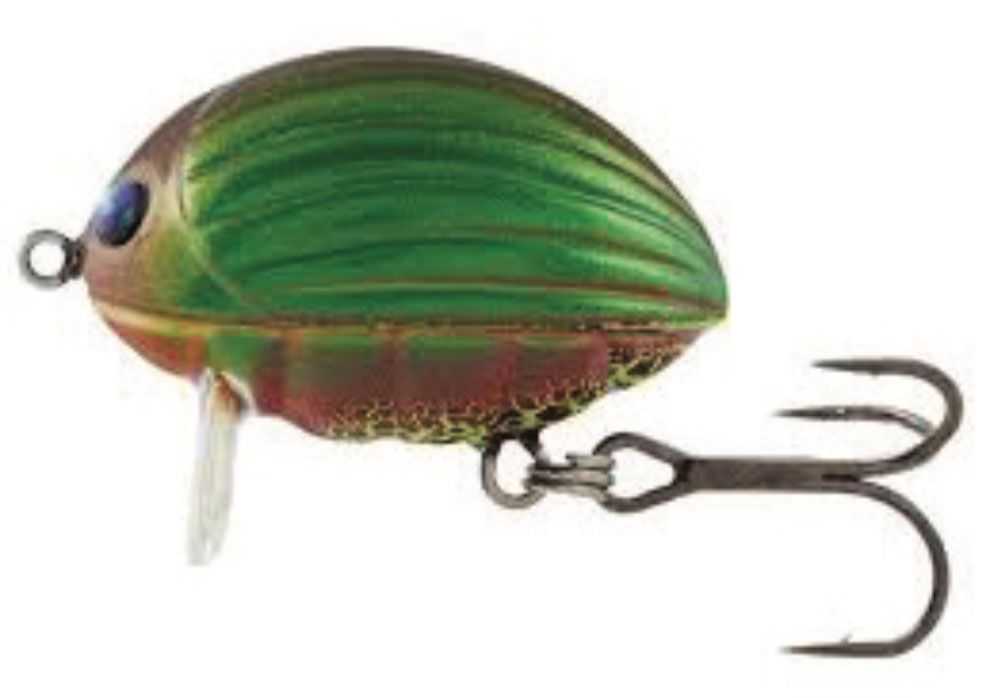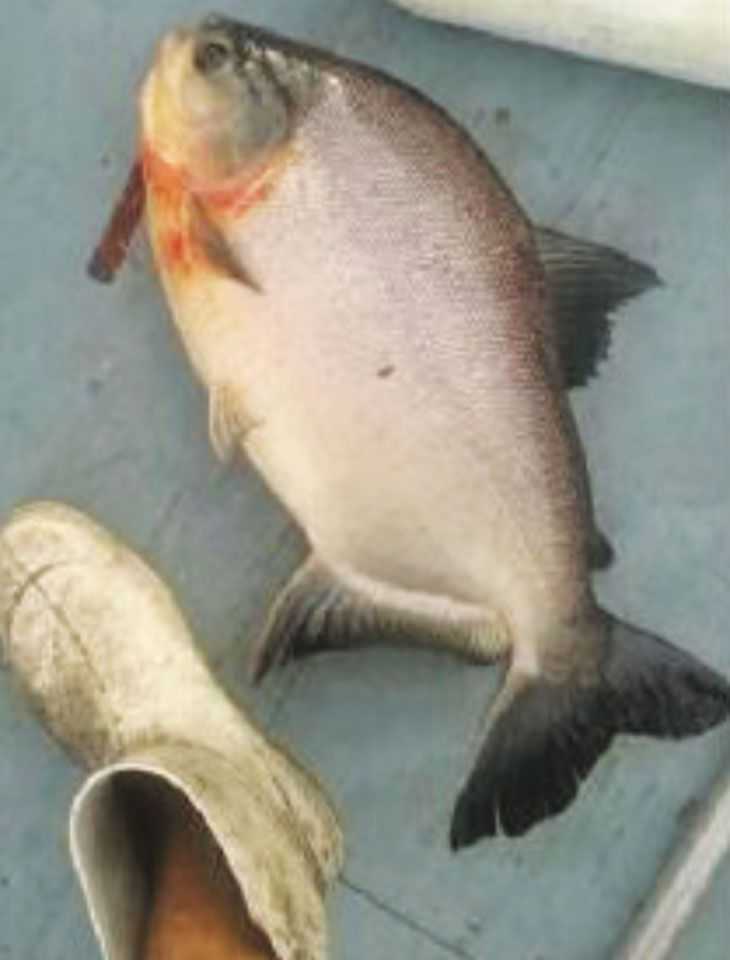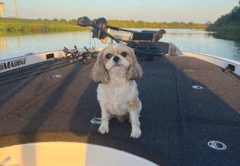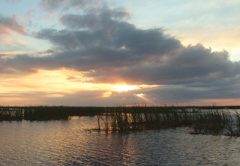MEET THE SALMO BASS BUG
AUGUST 2015 – MINNEAPOLIS, MINN.
Salmo Lures of Poland has created an innovative new lure design to capture the imagination of bass anglers here in the USA… it is called the Bass Bug.
This bizarre looking lure is sure to get a few chuckles from anglers, but when you start fishing with it, you can see this is an extremely well designed lure that actually fits the bill for what many anglers are looking for in a “Wake Bait” style of crankbait.
“For 25 years Salmo has been revolutionizing hard bodied lure profiles and lure actions with great success, stated Peter Piskorski, owner and head lure designer for Salmo.
“It is clear from a salesman’s perspective you need to have lures that look like a real baitfish, but from a fish’s perspective, their needs are far different. Who would think a bass would love a plastic night crawler or a hunk of wire shaped like a safety pin and a spinner? I approached the creation of the Bass Bug by not copying the existing wake baits like everyone else has done who import copycat lures from China. I studied what made a bass strike a wake bait and designed a lure just for this application. I was not at all surprised with the success it has been having with our bass fishing experts in the USA and Europe.”
For casting distance, Salmo says the Bass Bug will cast farther and straighter than any lure in its class. Wake bait fish are in shallow water and the farther away from the boat you can cast, the better your odds get.
Wake baits need to move water to create a bulging wake to call in the fish, but not ride too high in the water to improve hookups. Salmo says the Bass Bug will shock many in that line size and speed of the lure does not hurt the action of the lure. You will simply not find a better lure for this purpose.
Does it look like other wakes baits? Nope, it was never intended to be a copycat lure, as Piskorski believes the ultimate “Wake Bait” needs to appeal to the fish first and the fishermen will follow. When you add TWO rattle chambers with the Salmo long cast system and a large KVD Triple Grip hook, you have a lure that Salmo says converts more strikes than any other style wake bait. So for casting range, action and hooking success, the Bass Bug could be a true game changer and one that will earn its place in the tackle boxes of bass anglers around the world by doing what it does best…catch fish.
The suggested retail of the Salmo Bass Bug is $10.99 and will be available on line in February 2016. To learn more about the Bass Bug and the complete line of crankbaits from Salmo, go to www.salmofishing.com.
LAKE OKEECHOBEE PACU
During a recent fishing outing on Lake Okeechobee, commercial fisherman Bryton Shockley reeled in what appeared to be a red bellied piranha, one of the most feared carnivorous freshwater fish known to man. After researching photos on-line and then contacting Florida Fish and Wildlife Conservation Commission (FWC) biologists for verification, the scientists determined the fish was a Pacu, a close relative to the piranha. Pacu can look extremely similar to piranha but have blunt, human-like teeth instead of razor- sharp teeth and are not dangerous to people. They can also grow much larger than piranha.
Pacu are normally found in South America’s Amazon River and are primarily herbivores and pose little threat to native species. Though the FWC receives numerous reports of single Pacu catches typically from private ponds, there is no evidence that this non-native species is reproducing in Florida waters. The primary source of these fish is most likely the illegal dumping of this
non-native fish from private owner aquariums. The FWC encourages anglers who catch a Pacu or any other non-native species to remove the fish from the environment to minimize the impact on future native species.
GOV. SCOTT NAMES KEY WEST DEVELOPER TO FLORIDA FISH AND WILDLIFE BOARD
AUG 24, 2015 – BY JIM TURNER NSF
Robert Spottswood, the president of a Key West real-estate development company has been named to the Florida Fish and Wildlife Conservation Commission.
The president of a Key West real-estate development company has been named to the Florida Fish and Wildlife Conservation Commission, replacing the former chairman who announced last week he is stepping down after 12 years on the board.
The appointment of Robert Spottswood by Gov. Rick Scott came three days after Richard Corbett, whose term on the board was scheduled to expire in January 2018, submitted his resignation to Scott.
Corbett, a Tampa resident who has been on the commission since February 2003 and was named chairman in June 2013, didn’t state a reason for his decision in a letter to Scott, instead praising staff and the governor’s approach to conservation.
“I am confident you will continue this positive trend and select a candidate that will carry forward the energy and enthusiasm for Florida’s fish and wildlife resources, while being mindful of the strong relationship between the stewardship of these resources and their importance to our economy and quality of life in Florida,” wrote Corbett. The resignation is effective Sept 1.
Corbett has taken some fire this year for comments he made as the commission advanced plans to reopen areas of the state to bear hunting for the first time in more than 20 years.
In his letter, Corbett spoke of the commission and staff making “great progress in the conservation arena.”
“We always worked hard to find the right balance between the needs of our fish and wildlife resources and the needs of Florida’s citizens and visitors,” Corbett wrote to Scott. “I believe our accomplishments are reflective of the outstanding appointments you made to our commission — maintaining continuity while blending in fresh thinking and ideas into our collaborative efforts.”
In appointing Spottswood, Scott thanked Corbett for “his dedication to protecting Florida’s incredible natural resources.”
Spottswood will face Senate confirmation for the commission position in 2016.
CONSTRUCTION NEARS FINISH ON MAJOR EVERGLADES WATER QUALITY PROJECT
SEPT 10, 2015 – BY SWFM
West Palm Beach, FL — With 16,500 cubic yards of concrete, 2,100 tons of steel and 21 miles of levees, a massive new South Florida Water Management District (SFWMD) project to improve Everglades water quality is nearing completion and set to start operations.
Water already has begun flowing into the A-1 Flow Equalization Basin (FEB), which will help optimize wetlands that clean phosphorus from water before it reaches the Everglades. The basin will be the first project completed as part of the State’s Restoration Strategies plan to improve water quality for the River of Grass.
“Completing this significant project and continuing progress on others is how we achieve water quality goals,” said Jeff Kivett, SFWMD Director of Operations, Engineering and Construction. “The A-1 will soon be fully operating and providing its intended critical restoration benefits to the Everglades.”
A-1: How it Works
With the capacity to hold 60,000 acre-feet of water at a site west of U.S. 27 in Palm Beach County, the A-1 was designed to capture and store peak stormwater flows during the wet season or during heavy rainfall events.
Emergent vegetation such as bulrush and cattail planted within the site will help reduce the concentration of phosphorus in the water.
A system of 21 miles of earthen levees and 15 water control structures — 10 with solar power — within A-1 gives water managers the new ability to deliver water at the right time and in the right quantity to the vast Stormwater Treatment Areas (STAs) 2 and 3/4 to the south and east.
Achieving optimal water flow to these constructed wetlands enables emergent and submerged aquatic vegetation such as southern naiad to most effectively and naturally remove nutrients from the water that eventually flows to Everglades National Park.
The District operates a network of five STAs south of Lake Okeechobee with an effective treatment area of 57,000 acres. Since 1994, the treatment areas have retained more than 2,012 metric tons of total phosphorus that would have otherwise entered the Everglades.
Fast Facts Construction of the A-1 required massive amounts of land, material and heavy equipment, including,
• 15,000-acre footprint
• 1.6 million cubic yards of fill material, all mined on-site
• 3.1 million cubic yards of muck was degraded and used as topsoil
• 23 massive, 40-ton articulated dump trucks
• 150 construction personnel on-site each day
Construction of the A-1 started in October of 2013 and benefited from
significant work already completed at the site for a reservoir originally planned to provide deep water storage, known as the EAA Reservoir.








